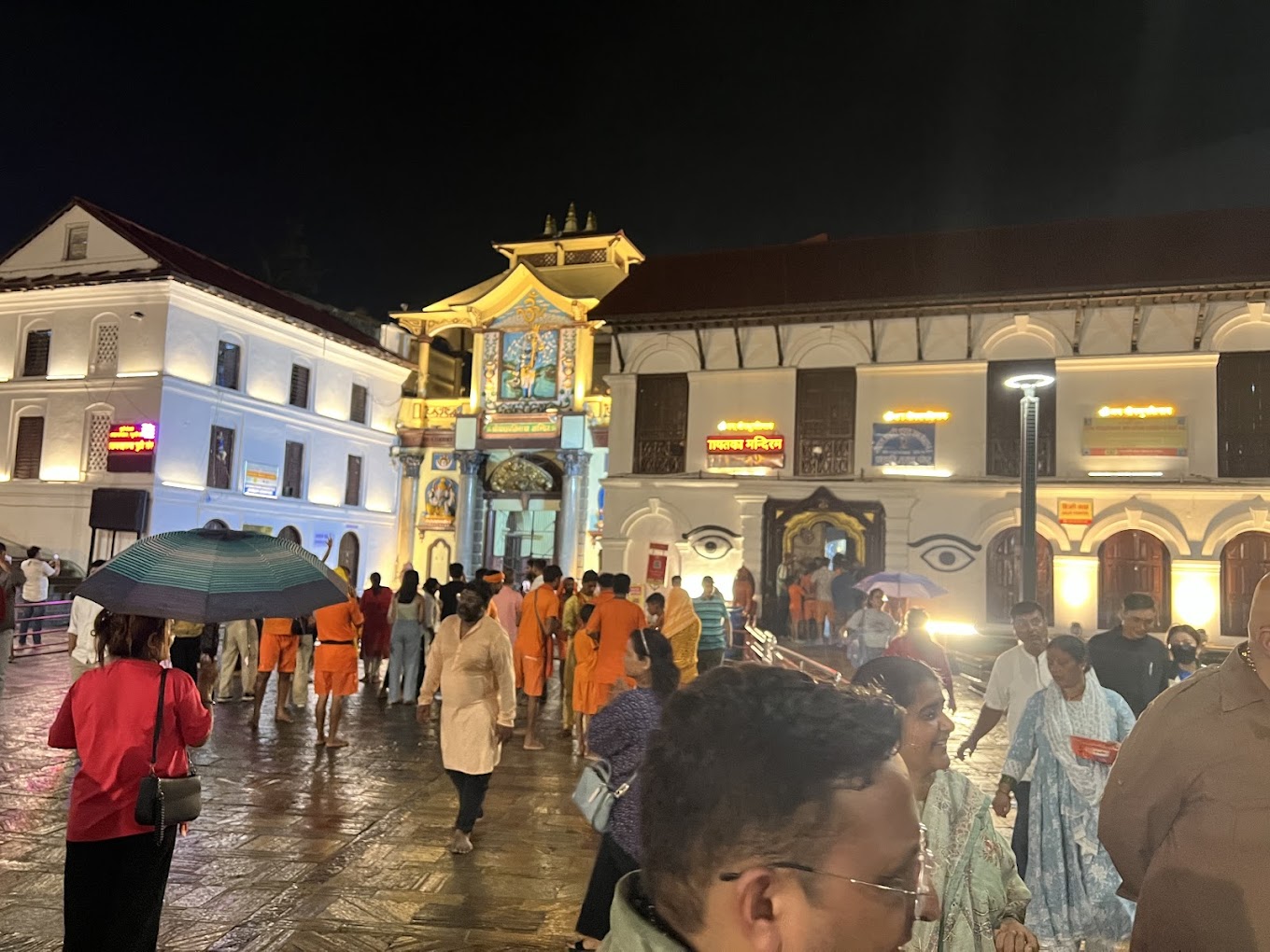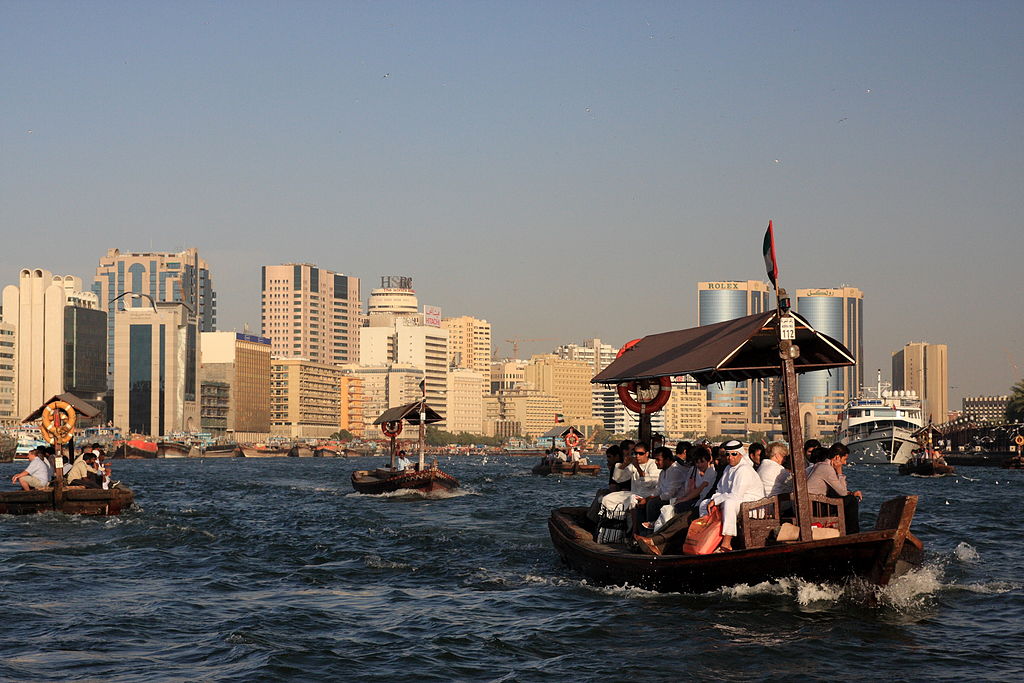
Pokhara, a picturesque city in Nepal, is renowned for its stunning natural beauty and vibrant cultural heritage. Nestled in the foothills of the Himalayas, it serves as a gateway to the Annapurna mountain range, making it a popular destination for trekkers and adventure enthusiasts. The city is adorned with serene lakes, with Phewa Lake being the most prominent. Visitors can enjoy boating on the lake, with the reflection of the Annapurna peaks creating a mesmerizing view. Pokhara offers a blend of tranquility and adventure. The World Peace Pagoda, perched on a hilltop, provides panoramic views of the Annapurna range and Pokhara Valley.
1. Phewa Lake
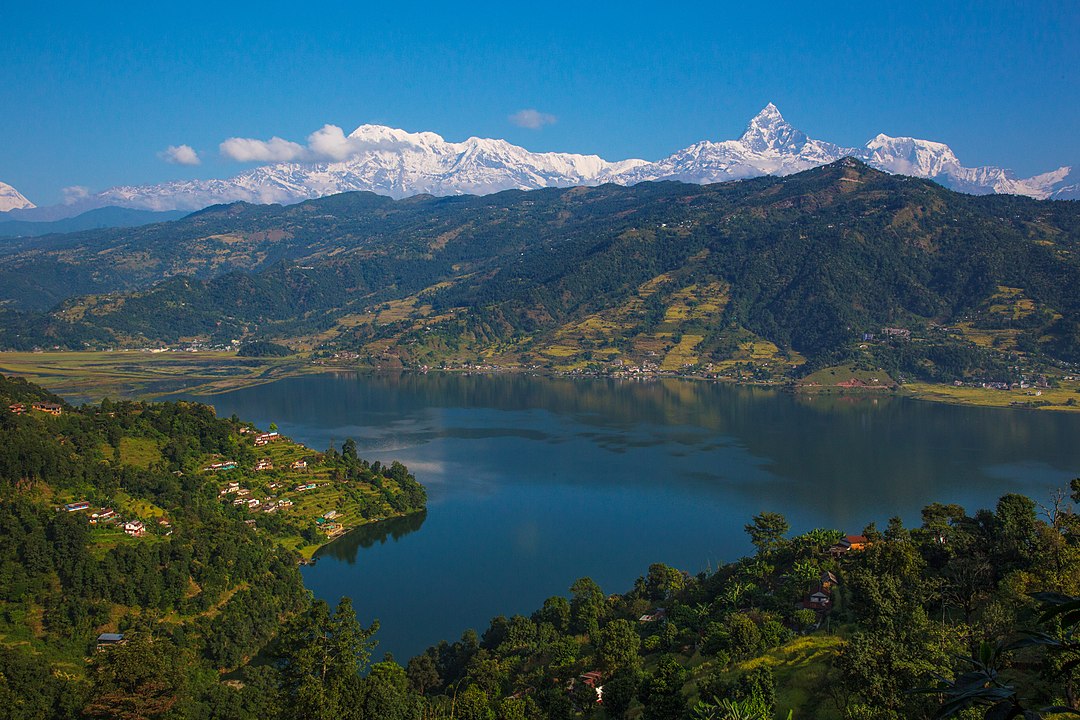
Phewa Lake, also known as Phewa Tal, is the second-largest lake in Nepal and one of Pokhara’s most enchanting attractions. The lake is renowned for its serene and picturesque setting, surrounded by lush forests, rolling hills, and the majestic Annapurna mountain range. One of the lake’s most iconic features is the Tal Barahi Temple, a two-story pagoda situated on an island in the middle of the lake. This temple is a significant religious site for Hindus and attracts both pilgrims and tourists. The temple is accessible by boat and holds religious significance, attracting both devotees and tourists. Boating on Phewa Lake is a popular activity, offering a peaceful way to soak in the stunning scenery and enjoy the calm waters.
2. Sarangkot

Sarangkot, a picturesque village located on the outskirts of Pokhara, Nepal, is renowned for its breathtaking panoramic views of the Himalayas and its reputation as a premier destination for adventure activities. Perched at an altitude of approximately 1,600 meters, Sarangkot offers unobstructed vistas of some of the world’s highest peaks, including Dhaulagiri, Annapurna, and Machhapuchhre (Fishtail). The village’s strategic location makes it an ideal spot for witnessing the stunning sunrise and sunset over these majestic mountains, drawing tourists and photographers from around the globe.
The journey to Sarangkot is as enchanting as the destination itself. Visitors can reach Sarangkot by a short drive from Pokhara, followed by a brief hike, or opt for a more adventurous trek through scenic trails that wind through lush forests and terraced fields. Sarangkot is also a hub for adventure enthusiasts. The village is famous for its paragliding opportunities, offering thrilling flights that allow participants to soar high above the Pokhara Valley, taking in the breathtaking landscapes from a unique vantage point. Additionally, Sarangkot is a starting point for various trekking routes that cater to different levels of experience, making it accessible to both novice and seasoned trekkers.
3. World Peace Pagoda

The World Peace Pagoda, or Shanti Stupa, is an iconic monument dedicated to the promotion of global harmony and tranquility. Situated on a hilltop overlooking the serene Phewa Lake in Pokhara, Nepal, this impressive white stupa was constructed by Buddhist monks from the Japanese Nipponzan Myohoji organization. Its location at an elevation of 1,100 meters provides visitors with breathtaking panoramic views of the Annapurna range and the city of Pokhara below. The journey to the World Peace Pagoda is an experience in itself. Visitors can opt for a short hike through lush forests, which is both invigorating and meditative, or take a boat ride across Phewa Lake followed by a climb up the hill. As they ascend, the tranquil environment and natural beauty of the surroundings prepare them for the serene ambiance that awaits at the top. Upon reaching the stupa, visitors are greeted by the sight of the immaculate white structure standing in stark contrast to the vibrant greenery and rugged mountains around it. The stupa is adorned with golden statues of Buddha, each representing different stages of his life, and intricate carvings that reflect the artistry and devotion involved in its construction. The World Peace Pagoda is more than just a place of worship; it is a symbol of unity and a beacon of hope for a world free from conflict and strife. It stands as a reminder of the principles of peace, compassion, and non-violence, encouraging people from all walks of life to reflect on their actions and aspire to live harmoniously with one another. The serene atmosphere and the spiritual significance of the stupa make it a popular destination for both tourists and pilgrims, offering a space for reflection, meditation, and a deeper connection with the ideals of peace and unity.
4. Davis Falls

Davis Falls, locally known as Patale Chango, is a captivating waterfall located in Pokhara, Nepal. Named after a tragic incident in 1961 where a Swiss woman named Mrs. Davis was swept away by the waters, the falls have since become a popular tourist attraction. The waterfall is unique because the water vanishes into an underground tunnel after cascading down, creating a mystical and intriguing spectacle. Situated about 2 kilometers from the Pokhara Airport, Davis Falls is easily accessible and often included in city tours. The falls are fed by the Pardi Khola stream, which gushes down with tremendous force, especially during the monsoon season, making it a spectacular sight. The water disappears into a sinkhole and travels through an underground passage before resurfacing at the Gupteshwor Mahadev Cave, located nearby. The surrounding area of Davis Falls is beautifully landscaped with gardens, stone sculptures, and small shrines, providing a serene environment for visitors. There are viewing platforms and pathways that allow tourists to get close to the waterfall and enjoy its full splendor. The sound of the rushing water, combined with the lush greenery and vibrant flowers, creates a peaceful and rejuvenating atmosphere.
5. Gupteshwar Mahadev Cave
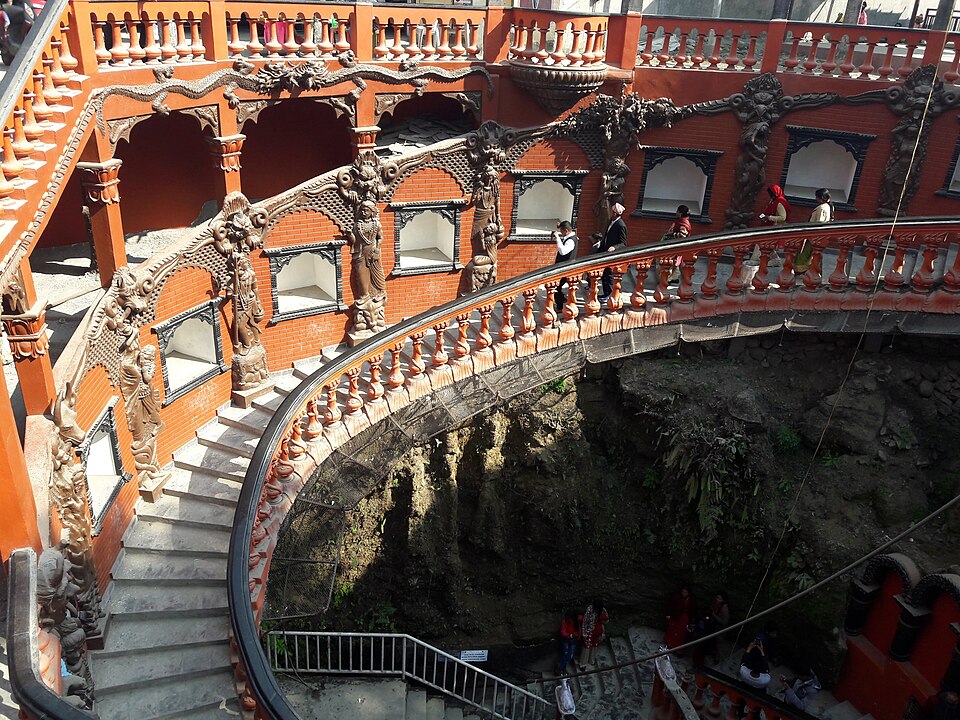
Gupteshwar Mahadev Cave, situated in Chhorepatan, Pokhara, is a captivating natural and cultural landmark discovered in the 16th century. This cave, dedicated to Lord Shiva, is significant for both its geological formations and religious importance. Upon entering the narrow passage, visitors are greeted by chambers adorned with impressive stalactites and stalagmites, creating a mystical ambiance. The cave’s centerpiece is a naturally formed Shiva lingam, which attracts numerous devotees, particularly during the Shiva Ratri festival. This sacred symbol of Lord Shiva holds immense spiritual value, drawing pilgrims who come to offer prayers and seek blessings. One of the most striking features of Gupteshwor Mahadev Cave is its underground waterfall, which connects directly to Devi’s fall on the surface. The water cascades through the cave, creating a mesmerizing spectacle and a soothing sound that enhances the cave’s serene ambiance. This underground river, combined with the dim lighting and natural acoustics, makes for a unique and immersive experience.
6. Bindhyabasini Temple

Bindhyabasini Temple, one of Pokhara’s oldest and most revered temples, is dedicated to the Hindu goddess Durga. Situated in the heart of the city, this ancient temple is a significant pilgrimage site for devotees. Its history and architectural charm make it a notable attraction for both religious pilgrims and tourists. The temple is perched on a small hill, offering panoramic views of the surrounding landscape, including glimpses of the Annapurna mountain range on clear days. The hilltop location enhances the serene and tranquil ambiance of the temple, making it a peaceful retreat from the bustling city below. The main shrine of Bindhyabasini Temple features a striking idol of Goddess Durga, adorned with vibrant decorations and offerings. The deity is worshipped as a powerful protector and symbol of strength and victory. Devotees visit the temple to seek blessings, especially during major Hindu festivals such as Dashain, when the temple becomes a focal point for grand celebrations and rituals. The temple’s architecture reflects traditional Nepali styles, with intricately carved wooden windows and ornate decorations.
7. Begnas Lake

Begnas Lake, located about 15 kilometers southeast of Pokhara, is one of the region’s tranquil and scenic lakes. Often overshadowed by the more famous Phewa Lake, Begnas Lake offers a serene and less crowded alternative for visitors seeking a peaceful retreat. Surrounded by lush green hills and terraced fields, Begnas Lake provides stunning views of the natural landscape and the distant Annapurna mountain range. The lake’s calm waters reflect the surrounding scenery, creating a picturesque setting that is perfect for relaxation and contemplation. Visitors can enjoy a variety of activities at Begnas Lake. Boating is a popular option, allowing tourists to leisurely paddle across the lake while soaking in the beautiful surroundings. The area around Begnas Lake is less developed compared to Pokhara’s Lakeside, which helps maintain its tranquil atmosphere. There are several small guesthouses and local eateries where visitors can enjoy traditional Nepali cuisine while overlooking the lake. The calm and peaceful environment makes it an ideal location for a relaxing getaway or a day trip from Pokhara.
8. Bat Cave
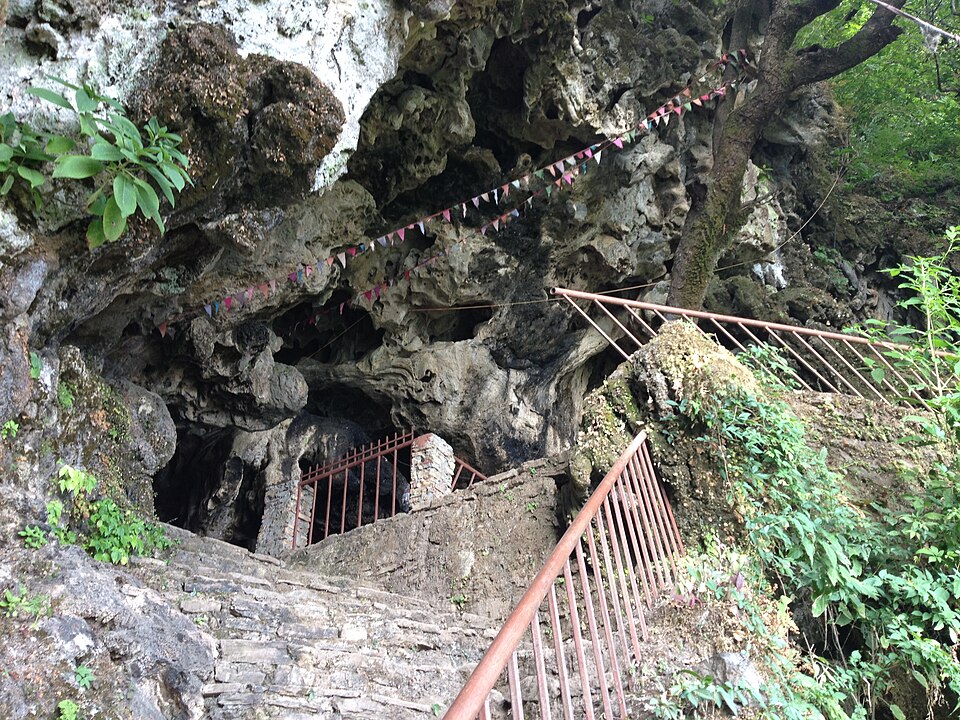
Bat Cave, locally known as Chamero Gufa, is one of the fascinating natural attractions in Pokhara, Nepal. Located about 10 kilometers from the city center, this cave is famous for its population of horseshoe bats and its intriguing geological formations. The cave’s entrance is relatively small, leading visitors into a dark and narrow passageway. As they venture deeper, they encounter the bats, which cling to the cave’s ceiling in large numbers. The sight of these nocturnal creatures in their natural habitat is both eerie and fascinating, providing a unique experience for adventurous travelers. Bat Cave’s interior features a series of chambers and tunnels formed over centuries by natural processes. The cave’s walls are adorned with stalactites and stalagmites, which add to its mystical ambiance. Some formations resemble various shapes and figures, sparking the imagination of those who explore its depths. One of the highlights of visiting Bat Cave is the “exit hole,” a small opening through which visitors must climb to leave the cave. This narrow exit can be challenging, requiring visitors to squeeze through a tight space, adding an element of adventure to the visit. For those who prefer not to take this route, the entrance can also serve as the exit. Guided tours are available, providing insights into the cave’s history, geology, and the habits of the resident bats. These guides ensure the safety of visitors while sharing interesting facts about the cave and its inhabitants.
9. Mahendra Cave

Mahendra Cave, located in the northern outskirts of Pokhara, Nepal, is one of the city’s most popular natural attractions. Named after King Mahendra Bir Bikram Shah Dev, this limestone cave is renowned for its impressive stalactite and stalagmite formations and its intriguing underground passages. The entrance to Mahendra Cave is easily accessible, leading visitors into a cool, dark environment filled with natural rock formations. The cave’s walls and ceilings are adorned with a variety of shapes and patterns, created by the slow deposition of minerals over thousands of years. These formations, resembling various objects and animals, spark the imagination and add to the cave’s mystical atmosphere. One of the cave’s most striking features is a large stalagmite formation that many visitors believe resembles the figure of Lord Shiva, a major deity in Hinduism. This natural formation has become a site of worship for Hindu pilgrims, who visit the cave to offer prayers and seek blessings.
10. Seti River

The Seti River Gorge in Pokhara is a remarkable natural wonder, known for its deep and narrow chasm carved by the milky-white waters of the Seti River. The Seti River Gorge is particularly notable for its depth, which in some places reaches up to 20 meters (65 feet). Despite its considerable depth, the gorge is often surprisingly narrow, with some sections measuring only a few meters wide. The river’s turbulent waters have cut through the limestone bedrock, creating a dramatic canyon that runs through the heart of Pokhara. One of the best places to view the Seti River Gorge is from the area near the old Pokhara Hospital. Here, a bridge spans the gorge, offering a vantage point where visitors can peer down into the chasm below. The sight of the river, flowing swiftly and silently through the deep canyon, is both awe-inspiring and humbling. The water’s unusual milky color is due to the high levels of limestone and other minerals it carries from the Annapurna range. The gorge is also accessible from various points around Pokhara, with several viewpoints offering different perspectives of this natural marvel. The Mahendra Bridge and the KI Singh Bridge are other popular spots where visitors can observe the gorge’s depth and the force of the river below.
How to reach Pokhara
Reaching Pokhara, a popular tourist destination in Nepal, can be done via several modes of transportation, depending on your starting location and preferences.
By Air:
From Kathmandu:
- Flight: The quickest way to reach Pokhara from Kathmandu is by a domestic flight. The flight takes about 25-30 minutes and offers stunning aerial views of the Himalayas. Several airlines operate daily flights between Tribhuvan International Airport (KTM) in Kathmandu and Pokhara Airport (PKR).
- Airport to City Center: Pokhara Airport is located close to the city center, and a short taxi ride will take you to your hotel or any other destination within Pokhara.
From Other Cities:
- There are also direct flights to Pokhara from other cities like Chitwan (Bharatpur Airport) during the peak tourist season. However, these flights are less frequent compared to those from Kathmandu.
By Road
From Kathmandu:
- Bus: There are several bus options available, ranging from tourist buses to local buses. Tourist buses are more comfortable and generally safer, with amenities like air conditioning. The journey takes about 6-8 hours, depending on traffic and road conditions. Buses typically depart early in the morning from the Tourist Bus Park in Kathmandu.
- Private Car/Taxi: Hiring a private car or taxi is another option, offering more comfort and flexibility. This option is faster, usually taking around 5-7 hours, depending on traffic and stops along the way.
By Private Vehicle
- Self-Drive: If you’re comfortable driving in Nepal, you can rent a car or a motorbike to reach Pokhara. The roads offer beautiful views, but they can be challenging due to traffic and winding mountain roads.
- Tour Operators: Many tour operators offer private vehicle services with a driver, which can be a convenient way to travel, especially for groups or families.
Places to eat in Pokhara
Pokhara, Nepal, is known for its stunning lakeside views, vibrant culture, and a wide variety of culinary options. Here are ten top places to eat in Pokhara, ranging from traditional Nepali food to international cuisine:
- Moondance Restaurant: Popular dining spot known for its beautiful lakeside location and inviting ambiance. Visit during sunset for breathtaking views.The menu features a mix of Nepali, Indian, and international dishes. Their offerings include fresh seafood, pasta, and local specialties.
- Caffe Concerto: A cozy spot famous for its coffee, pastries, and Italian cuisine, perfect for a relaxing afternoon. The cafe offers a diverse menu featuring Italian dishes, including pasta, pizzas, and delicious pastries. Their coffee is also highly praised.
- The Olive Café: Popular spot, especially known for its relaxed vibe and delicious offerings. If you prefer dining al fresco, their outdoor seating allows you to enjoy the pleasant weather and scenic views. The menu features a range of international dishes, including fresh salads, hearty breakfast options, and flavorful sandwiches. They also serve excellent coffee and smoothies.
- The Himalaya Kitchen: Pokhara is a fantastic spot for those wanting to savor authentic Nepali and Indian cuisine. The menu features a variety of traditional Nepali dishes, including dal bhat, momos, and curries, as well as Indian favorites. The focus is on fresh ingredients and authentic flavors.
- OR2K: – A popular spot for vegetarians and vegans, this restaurant serves Middle Eastern and Mediterranean cuisine in a vibrant, welcoming setting. They offer a wide range of vegan dishes, catering to various dietary preferences.
Activities to Enjoy In Pokhara
Pokhara offers a wide range of activities for adventure seekers and those looking to relax. Here are some popular activities you can enjoy:
1. Trekking: Pokhara is a gateway to many trekking routes. Popular treks include the Annapurna Base Camp (ABC), Ghorepani Poon Hill, and Mardi Himal Trek. These offer stunning mountain vistas and cultural experiences.
- Annapurna Base Camp (ABC): This is one of the most popular treks in Nepal, typically lasting 7-12 days. The trek takes you through terraced farmlands, lush forests, and quaint villages before reaching the base camp at 4,130 meters, surrounded by towering Himalayan peaks.
- Ghorepani Poon Hill Trek: A shorter trek (4-5 days), this is perfect for beginners and offers some of the best panoramic views of the Annapurna and Dhaulagiri ranges, especially from Poon Hill at sunrise.
- Mardi Himal Trek: This is a quieter, off-the-beaten-path trek that takes 5-7 days, offering stunning views of Machhapuchhre and the Annapurna massif.
2. Boating on Phewa Lake: is the crown jewel of Pokhara. This tranquil lake offers boat rentals where you can paddle at your own pace. The reflection of the Annapurna Range on the lake, particularly at sunset, is breathtaking. You can also row to the Tal Barahi Temple, located on an island in the middle of the lake, and pay homage to the goddess Barahi. The calm waters and scenic surroundings make this a relaxing and peaceful experience
3. Hiking to the World Peace Pagoda: The World Peace Pagoda, also known as Shanti Stupa, is a large Buddhist monument situated on the top of a hill. It’s a symbol of peace, built by Japanese monks to promote world harmony. The stupa offers a spectacular vantage point for a panoramic view of the Himalayas, Phewa Lake, and the Pokhara Valley. The hike to the stupa takes about 1-2 hours, starting from Lakeside or the dam area. You can also reach the stupa by boat, crossing Phewa Lake and then hiking uphill.Paragliding: Pokhara is considered one of the best places in the world for paragliding. You can soar above Phewa Lake with the backdrop of the Himalayas. Tandem flights are available for beginners.
4. Sarangkot Sunrise View: Sarangkot is a village located at an altitude of 1,600 meters, famous for its spectacular sunrise views over the Himalayas. From Sarangkot, you can see some of the highest peaks in the world, including Dhaulagiri, Annapurna I, and Manaslu, as well as the iconic Machhapuchhre (Fishtail) Mountain. Most visitors start the journey early in the morning (around 4:30-5:00 AM) to reach the viewpoint in time for sunrise. It’s a popular spot for photographers and nature lovers.
5. Mountain Biking: Pokhara offers many scenic biking routes for both beginners and experienced riders. You can cycle around Phewa Lake, along the Pokhara valley, or for more adventurous riders, take a ride to Begnas Lake or through the trails leading to nearby villages like Naudanda. Renting a bike is easy in Lakeside, and some tours offer guided rides.

